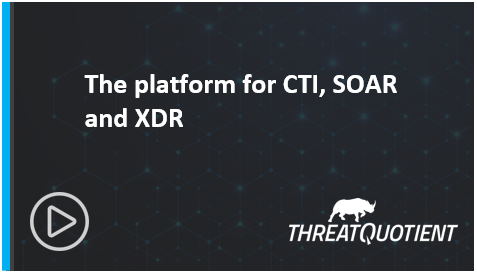ThreatQuotient, founded in 2013 by Ryan Trost and Wayne Chiang as part of an effort to create a single source of centrally managed cybersecurity solutions. The company’s product, ThreatQ, is designed to serve as a threat intelligence platform, with a built-in self-optimizing library that features a workbench that enables threat detection and response. ThreatQ can classify and prioritize cyberthreats based on customer-provided metrics, as well as facilitate aggregation and operation across systems and equipment. It offers configuration and integrations as well as workload and enrichment, coordinating the inefficiencies that span security operations. With ThreatQ, security leaders in organizations can direct actions, assign tasks, and see results in real time. They can also import and add data sources and export intelligence to third-party tools through integrations with feeds and security systems.
ThreatQuotient Products
ThreatQ Platform
Automatic intelligence aimed at detecting threats on the Darknet. Its main characteristics are:
- Datalinq Engine: Connecting disparate systems and sources, this adaptive data engine imports and aggregates external and internal data by normalizing it into a single format; and then analyze the data for decision-making and action, and export the right intelligence to the right tools to accelerate threat detection and response.
- Threat Library: Using ThreatQ as a threat intelligence platform provides a threat library that automatically scores and prioritizes intelligence based on parameters set by the customer. Prioritization is calculated across many sources, both external and internal, to provide a single valid source through aggregated context. This eliminates noise, reduces false positives, and allows users to focus on the data that really matters.
- Threatq Investigations: Eliminate collaboration and coordination inefficiencies that exist in security operations to accelerate detection and response. This solution, which is the first phase of cybersecurity analysis, streamlines investigations and improves active collaboration between teams. Team leaders can direct actions, assign tasks, and see results in near real-time.
- Marketplace: It allows integration with the organization’s existing security solutions for better use of investments, integrating its tools, equipment and workflows. It also has an API/SDK for open integration.




.jpg)



